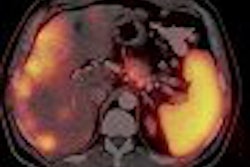
NEW YORK (Reuters Health), Sep 14 -Drug-eluting stents, either coated with sirolimus or paclitaxel, are safe for percutaneous coronary intervention (PCI) for acute MI with ST-segment elevation, according to two prospective studies reported in the New England Journal of Medicine for September 14.
Most previous studies evaluating these stents were conducted when they were used in elective procedures and have excluded patients with MI, note the authors of the first report.
Dr. Christian Spaulding, from Cochin Hospital in Paris, and other TYPHOON study investigators in Europe, recruited 712 patients presenting within 12 hours of symptom onset. A total of 356 patients were randomly assigned to a sirolimus-eluting stent (Johnson & Johnson), and 359 to any commercially available uncoated stent.
Target vessel failure at 1 year occurred in 7.3% of those in the sirolimus group and in 14.3% in the bare-metal stent group (p = 0.004), primarily due to significant reduction in the rate of target-vessel revascularization (5.6% versus 13.4%).
However, there were no significant differences in the corresponding rates of death (2.3% versus 2.2%), recurrent MI (1.1% and 1.4%) or in-stent thrombosis (3.45 and 3.6%).
At 8 months, 170 patients underwent angiography. Uncoated stents were associated with significantly greater in-stent late luminal loss and in-stent restenosis.
The other report is on the PASSION trial conducted in the Netherlands and headed by Dr. Gerrit J. Laarman, a cardiologist at Onze Lieve Vrouwe Gasthuis in Amsterdam. The investigators randomly assigned 619 patients with acute MI to primary percutaneous coronary intervention with a paclitaxel-stent and or an uncoated stent (all stents from Boston Scientific). Patients underwent treatment within 6 hours of symptom onset.
Trends toward better outcomes in all measures favored paclitaxel at 1 year. The primary end point was a serious adverse cardiac event at 12 months, including cardiac death, recurrent MI and ischemia-driven revascularization of the target lesion.
For patients treated with paclitaxel stents and bare metal stents, the cumulative incidence of the primary end point was 8.8% and 12.8%, respectively, which the authors maintain is clinically significant even though the difference did not achieve statistical significance.
The incidence of target-lesion revascularization was 5.3%, recurrent MI incidence was 1.7%, and death from cardiac causes was 3.9% in the paclitaxel group. Corresponding rates in the bare-metal stent group were 7.8%, 2.0% and 6.2%.
Dr. Laarman's group contends that differences between the TYPHOON and PASSION trials -- type of stents, follow-up angiography, primary end points, and inclusion and exclusion criteria -- make it difficult to compare outcomes between the two. However, they add, the event rates in the two groups were similar.
In a related editorial, Dr. Frans Van de Werf, from the University of Leuven in Belgium, reiterates this observation, noting that "it would be dangerous to conclude from these data that one drug-eluting stent is better than the other in primary PCI, since direct comparisons of the two stents for this indication are not available."
He concludes: "Larger trials with hard clinical end points and longer follow-up are needed before routine implantation of drug-eluting stents can be recommended for all patients undergoing primary PCI."
By Karla Gale
Last Updated: 2006-09-13 17:00:12 -0400 (Reuters Health)
N Engl J Med 2006;355:1093-1113,1169-1170.
Related Reading
Study urged to assess late thrombosis risk with drug-eluting stents, September 12, 2006
Copyright © 2006 Reuters Limited. All rights reserved. Republication or redistribution of Reuters content, including by framing or similar means, is expressly prohibited without the prior written consent of Reuters. Reuters shall not be liable for any errors or delays in the content, or for any actions taken in reliance thereon. Reuters and the Reuters sphere logo are registered trademarks and trademarks of the Reuters group of companies around the world.


















